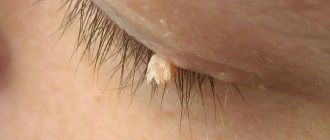Gynecological diseases are common in women of any age. Quite often, during examinations, specialists are faced with such a pathology as cervical erosion. It can be treated with medication, surgery, or alternative methods. In the early stages, the latter are quite sufficient, so it is worth considering the most effective folk remedies for the treatment of cervical erosion.
Using alternative methods, it is important to carry out all procedures according to the recommendations without interrupting the course of therapy. If they are not followed, even using the best methods does not guarantee results.
Treatment with folk remedies is of a purely individual nature, and this should be taken into account without fail. If a certain method does not give positive dynamics, it is worth changing the technique.
Cervical erosion
Cervical erosion is a disease in which ulcerations of various sizes appear on the vaginal part of the organ, namely on the mucous membrane. If timely measures are not taken, an infection can enter the body through damage and cause the development of an inflammatory process. Also, with such a pathology, in some cases, cell degeneration and the occurrence of malignant formations are observed.
Levomekol for cervical erosion
It is not for nothing that Levomekol ointment received its second name as “surgeons’ ointment.” It has proven high effectiveness in treating wounds and injuries of any type. Problems in the female genital area are no exception. In particular, Levomekol is used to treat cervical erosion.
Like many other products, Levomekol ointment is used in the form of tampons for erosion. The tampon size is 1.5 by 1.5 centimeters, height is 0.5 centimeters. The tampon is treated with Levomekol ointment and inserted into the vagina at night. In the morning, the tampon is removed and the necessary hygienic procedures are carried out (douching, etc.). Such manipulation should be carried out every day for 2 weeks (10-15 days is the optimal period).
Despite the high effectiveness of the drug, it is not a panacea; moreover, it can provoke side effects, such as allergies, etc. Cervical erosion, as it progresses, often leads to infertility. Therefore, you should not blindly rely on the effect of drugs and hope for “maybe”. Before use, you should undergo a full examination and consult a gynecologist.
Causes
Experts identify a number of reasons why the disease may occur. Basically, the appearance of pathology is caused by the following factors:
- Mechanical injuries. They appear during childbirth, abortion, or during rough sexual intercourse.
- Infections that are transmitted sexually.
- Hormonal imbalance, menopause and menstrual irregularities.
- Inflammatory diseases of various types.
- Decreased immunity.
- Precancerous change in the epithelial cell layer.
Also, the cause of erosion can be a combination of several factors and influences on the body, so its occurrence is quite difficult to predict.
Diagnostics
Diagnostic measures primarily consist of a preliminary examination using mirrors. During it, a specialist can visually identify the places where the pathology occurs, which look like areas of bright red color.
If the disease is present, additional medical measures are prescribed. Colposcopy allows you to examine the lesion in more detail. The procedure involves inspection under magnification. Also during the process there is the possibility of performing a biopsy. It involves taking part of the affected tissue for laboratory analysis. In addition, cytology and histology are performed upon request.
A complete list of medical studies, including general tests, allows you to accurately determine the diagnosis and prescribe effective treatment.
Cervical erosion: when should it be treated?
Author:
Bondar Yulia
9 minutes
1635
Cervical erosion is a fairly common diagnosis, which was previously thought to exist exclusively in Russia. However, if we take a closer look at exactly what pathologies this diagnosis includes, we can see that in other countries this disease also exists, albeit under different names.
What is cervical erosion
So, what is cervical erosion? The name of this pathology comes from the Latin “erosio”, which means corrosion or destruction. Erosion in Russia refers to any redness, irregularities and defects in the tissue around the cervix. This diagnosis is made very often. But underneath it can hide several very different diseases, the prognosis and treatment methods of which can vary significantly.
Stages of cervical erosion. Photo: Shutterstock/FOTODOM
What pathological conditions are grouped under the name “cervical erosion”?
Ectopic columnar epithelium . Erosion in the form of ectopia of columnar epithelium is a normal variant for all women under 25 years of age, all pregnant women and postpartum women within 3-4 months after childbirth. Therefore, it does not require treatment. If ectopia of columnar epithelium is detected in a woman over 30 years of age, then her hormonal levels need to be examined, since the cause of ectopia in women over 30 years of age is various hormonal imbalances in the body. Then, based on the test results, it is necessary to prescribe the woman treatment in the form of drugs that correct her hormonal status, and not to cauterize the erosion, which, if the concentration of hormones remains unchanged, will develop again after some time.
Ectropion is a pathology that is often considered erosion, although in fact it is a pathological condition of the cervix, in which there is an eversion of the mucous membrane of the cervical canal into the vaginal cavity. Clinical manifestations of ectropion develop with the addition of an inflammatory or precancerous lesion of the cervix.
Congenital ectropion of the cervix in young women who have not had pregnancies or childbirth before is a consequence of functional dyshormonal disorders. Acquired (post-traumatic) ectropion most often occurs as a result of damage to cervical tissue that was not repaired or was improperly sutured during childbirth. The danger of ectropion lies in the fact that the endocervix from its inherent alkaline environment inside the uterus enters the acidic environment of the vaginal contents, which disrupts the physiological secretion of the cervical glands and the barrier functions of the cervix, which are important for the prevention of infections and the reproductive process.
Cervical ectropion in some cases can lead to the penetration of vaginal microflora into the mucous membrane of the cervical canal and the development of an inflammatory process. Most often, ectropion is accompanied by pathological conditions such as endocervicitis, cervicitis, and endometritis. Chronic inflammation in the ectropion zone can create conditions for the development of true erosion, dysplasia, leukoplakia, atrophy of the cervical epithelium, and cervical cancer.
True erosion . It is customary to call true erosion of the cervix, which is formed as a result of damage and desquamation of the squamous epithelium around the external os of the vaginal part of the cervix. True cervical erosion is characterized by the formation of a wound surface with signs of inflammation. The most common cause of the development of true erosion of the cervix is irritation of the mucous membrane by pathological secretions of the cervical canal during endocervicitis. True erosion is usually bright red, irregularly round in shape, and bleeds easily on contact. During colposcopic examination and microscopy of the eroded surface, dilated vessels, swelling, infiltration, traces of fibrin, blood, and mucopurulent discharge are visible. After 1-2 weeks, true erosion enters the healing stage - pseudo-erosion.
Pseudo-erosion . During the healing process, the defect of the squamous epithelium is replaced by a cylindrical one, spreading to the erosive surface from the cervical canal. Columnar epithelial cells are brighter in color than stratified squamous epithelial cells, and the erosive surface remains bright red. The growth of cylindrical epithelium occurs not only along the surface of the erosion, but also in depth with the formation of branching glandular ducts. In the erosive glands, secretions are secreted and accumulated, and when the outflow is difficult, cysts are formed - from the smallest to those visible during visual examination and colposcopy. Sometimes large cysts located near the external pharynx look like cervical polyps. Multiple cysts lead to thickening - hypertrophy of the cervix.
The following types of pseudo-erosion are distinguished:
- follicular (glandular) - having pronounced glandular ducts and cysts;
- papillary - having papillary growths on the surface with signs of inflammation;
- glandular-papillary or mixed - combining the characteristics of the first two types.
Pseudo-erosion without treatment can persist for several months and years until the causes of its development and existence are eliminated. Pseudo-erosion can be a source of inflammation in the cervix due to the presence of infection in the erosive glands.
When inflammation subsides independently or as a result of treatment, the process of reverse replacement of the cylindrical epithelium with flat epithelium occurs, i.e. restoration of the normal integumentary epithelium of the cervix - the second stage of healing of erosion. At the site of healed erosion, small cysts (Nabothian cysts) often remain, formed as a result of blockage of the ducts of the erosive glands.
A long course of pseudo-erosions and the accompanying inflammatory process can lead to pathological changes in epithelial cells - atypia and dysplasia. Cervical erosion with the presence of epithelial dysplasia is considered a precancerous disease.
Inflammatory erosion (cervicitis). This is an inflammatory disease that affects the mucous membrane of the cervix (cervical canal). In this case, inflammation develops under the influence of infection. Trichomonas, chlamydia, gonococci, and mycoplasmas can act as pathogens. No less often, nonspecific inflammation is diagnosed, caused by the increased activity of staphylococci, streptococci, E. coli and other habitual microflora of the body. This phenomenon is usually considered the result of a sharp local or general decrease in immune defense. Treatment depends on the cause of the disease: bacterial cervicitis is treated with antibiotics and local anti-inflammatory drugs, while immunomodulators and antiviral drugs are prescribed against viral ones. If the cause of the infection is a hormonal imbalance, women are prescribed hormonal medications that can stop the process of further atrophy of the mucous membranes.
Why is cervical erosion dangerous?
Cervicitis in the absence of timely treatment can lead to a lot of complications. For example, often the acute form of the disease develops into chronic cervicitis of the cervix, which is much more difficult to treat. According to statistics, in approximately 10% of cases, the infection spreads higher, affecting other organs of the reproductive system and pelvis, including the uterus, ovaries, bladder, peritoneum, etc. In some cases, cervicitis leads to the development of adhesions in the abdominal cavity and pelvis, which, in turn, can cause infertility. Studies have also demonstrated that inflammation of the cervical canal tissue increases the risk of malignant tissue degeneration in patients infected with oncogenic papillomavirus.
Erosion is also considered a dangerous condition due to the fact that in some cases cervical dysplasia develops - atypical changes in the epithelium in its vaginal part, related to precancerous processes. In the early stages of its development, cervical dysplasia is a reversible disease, so its timely detection and elimination is a reliable way to prevent cancer risk. Unlike erosion, which occurs due to mechanical trauma to tissue, with dysplasia, disturbances affect the cellular structures of the tissues lining the cervix. The disease of cervical dysplasia occurs mainly at the age of 25-35 years, the frequency is 1.5 cases per 1000 women.
Is it necessary to treat cervical erosion?
So, as we can already see, cervical erosion does not always need to be treated. The need for therapy is determined by the type and condition of cervical erosion, as well as the nature of the factor that provoked its development.
If the patient has negative test results for sexually transmitted infections and there is no nonspecific inflammatory process provoked by microorganisms of the normal vaginal microflora, then there is no need to treat cervical erosion, regardless of its type. In this case, you should simply take a cytological smear for atypical cells.
If the results of a cytology smear do not reveal severe dysplasia in a woman, then you should simply monitor the erosion and not try to treat it in any way. The fact is that in the absence of nonspecific inflammation and sexually transmitted infections, any type of erosion (ectopia, ectropion or true erosion) can go away on its own for some time. Moreover, the probability of self-healing is quite high. However, even if the erosion does not go away, it does not require surgical treatment until the cytological smear reveals changes characteristic of severe cervical dysplasia.
Cervical erosion needs to be treated only if the surface of the cervix is severely ulcerated and any inflammatory process occurs in the vagina. But in this case, first of all, conservative therapy should be used, which consists of using anti-inflammatory, antibacterial and antifungal drugs that will destroy the microbes that cause the infectious-inflammatory process in the vagina. As practice shows, long-term remission very often occurs after anti-inflammatory therapy.
If relief of inflammation does not lead to a cure for cervical erosion, you should wait 3 to 4 months. Only after this can a decision be made on surgical treatment of the defect and the optimal method selected. In addition, surgical treatment is indicated when severe dysplasia is detected based on the results of a cytology smear, regardless of the presence of inflammation and the state of erosion. In such a situation, it is necessary to carry out preventive anti-inflammatory treatment, after which the affected tissues should be removed by any surgical method.
Methods for treating pathological conditions of the cervix
Diathermocoagulation is the oldest method of destructive intervention on the cervix. The method is based on the application of high frequency current between two electrodes, which causes melting of the cervical tissue due to the release of a large amount of heat. The use of diathermocoagulation is currently limited, since the method has a large number of negative aspects, including the inability to control the depth of destruction, as well as a large number of complications.
Cryodestruction. This method is based on the effect of liquid nitrogen on the affected area.
The cryosurgical method has the following advantages:
- healthy surrounding tissue is not damaged,
- there is no bleeding from the site of cryonecrosis,
- stenosis of the cervical canal does not form,
- menstrual and reproductive functions are not impaired,
- areas of cryodestruction heal quickly.
Cryodestruction is not accompanied by immediate removal of necrotic tissue from the body. A day later, demarcation begins, the necrosis zone is surrounded by a narrow rim of inflammatory hyperemia. At this time, the lumen of the vessels closes along the line of tissue rejection, so there is no bleeding, and the resulting powerful granulation shaft is a barrier to infection. At 3-5 weeks, necrotic masses are rejected and gradual epithelization occurs. Healing ends with the formation of delicate scars and epithelial layers. In some cases, a repeat procedure is prescribed.
Laser coagulation . Exposure to a pathologically altered area of the cervix with a laser beam is a modern and effective method of treatment for background and precancerous diseases of the cervix. To influence the affected area, continuous laser radiation is used. An unfocused beam of radiation is directed onto the pathologically altered surface using a mirror-prism light guide, which provides free movement in three planes. Irradiation time depends on the size of the dysplasia surface and averages 2-7 minutes.
In addition to irradiation of the affected tissue of the cervix, irradiation of 1-2 mm of borderline healthy tissue is mandatory. Irradiation is not accompanied by pain, no scab is formed, there is no bleeding from the irradiated surface both during and after irradiation, epithelization is completed within the next 3-4 weeks.
Chemical and drug coagulation . This method involves the use of electrophoresis with zinc and special preparations.
Radio wave excision . Radio wave excision is used to treat cervical erosion using the Surhydron device. This method is based on the action of high-frequency radio waves, which cause tissue resistance. As a result, a cut occurs due to heat, without mechanical damage. Radio wave technology allows you to avoid the formation of scars on the mucous membrane, making the procedure for removing erosion simple, quick and painless. During the excision process, healthy cells are not affected.
Argon plasma ablation . Ionized argon is used for cauterization. An argon plasma torch is brought to the eroded area at a distance of 0.5 cm. Ionization occurs under the influence of high-frequency electromagnetic waves. Local heating and evaporation of damaged cells occurs. The procedure is painless and healthy tissue is not injured.
Symptoms
Symptoms of cervical erosion are minimal. In most cases, it does not manifest itself in any way and is determined only during a routine gynecological examination.
Sometimes a significant area of organ damage can cause uterine bleeding and pain during sexual intercourse. With advanced disease, discomfort may occur in the lower abdomen and disruption of the menstrual schedule.
Why is cervical erosion dangerous?
The myth that only a sexually active woman can have such a disease has been debunked. It occurs even in virgins and those who have not yet given birth. Often the victims of the disease are middle-aged women.
Women with unstable hormonal levels and various sexual dysfunctions are also at risk. These are primarily teenage girls and women taking hormonal contraceptives. Early onset of sexual activity and indiscriminate change of sexual partners also increase the likelihood of the disease.
Often, signs of cervical erosion are invisible, and it can only be detected during a gynecological examination. But sometimes the body can give certain signs. A woman should be concerned about altered or untimely vaginal discharge - bloody, with an unpleasant odor.
If they appear between menstruation or after sexual intercourse, this is already a signal that the mucous membrane of the reproductive system is not in order. In this case, you should immediately consult a doctor and find out the cause.
When, during an examination by a gynecologist, damage to the mucous membrane around the pharynx of the cervix is detected, this is already the beginning of the disease. The type of damage determines its type.
It could be:
- False erosion or pseudo-erosion (ectopia). Cervical ectopia appears as a consequence of trauma, abortion, and sometimes after childbirth. Changes may also be a consequence of excess estrogen. This condition is not considered a disease and is treated only if inflammation is detected. False erosion is a rather insidious and unpredictable phenomenon. In place of the damaged epithelium, a new one usually appears, and in case of illness it is rejected and another focus of the disease appears. The danger is that this can happen for a long time without visible symptoms.
- True erosion, as a result of infections that can be sexually transmitted. It can be caused by chlamydia, genital herpes, trichomoniasis, gonorrhea, and even seemingly harmless candidiasis. To defeat the disease, you need to undergo a good examination by a doctor who will prescribe a course of treatment.
- Cervical dysplasia, which has a high chance of causing cervical cancer. It begins from infection with the human papilloma virus and can develop rapidly. This is the most serious and dangerous symptom and cannot be neglected. Urgent measures and specialist help are needed.
Treatment methods
Treatment methods for the disease depend on its stage, the patient’s age and the condition of the body. For young girls who have not yet given birth, the most gentle methods are recommended, excluding surgical intervention. The most common treatment is medication or alternative treatment. But these methods are also quite suitable for older women, especially if the pathology is diagnosed in time and is not widespread.
In advanced cases, more drastic methods are used.
- Cryodestruction. It involves treating erosion with liquid nitrogen.
- Laser coagulation. The affected area is exposed to a laser beam. This method is recommended for both superficial and deep erosions.
- Radio wave exposure. It involves exposing the affected tissue to a narrow beam of high-frequency radio waves.
- Chemical exposure. The erosion is cauterized with a preparation consisting of organic acids.
- Diathermoelectrocoagulation. Cauterization is carried out under the influence of electric current.
- Diathermoconization. Electrosurgical removal of the affected tissue is performed.
Such methods are practiced everywhere, but they are traumatic for the body. Therefore, treatment of cervical erosion with folk remedies is becoming increasingly popular, but cauterization is indispensable if the pathology is in an advanced stage
Treatment methods for cervical erosion
The main treatment for erosion that your doctor will offer you is cauterization. Cauterization of erosion can be done with a laser, radio waves, electric current, liquid nitrogen or chemical reagents.
The oldest and most traumatic method of cauterization is diathermocoagulation or cauterization with current. Gynecologists have different opinions about this method of therapy, but most do not recommend this method to women who are still planning to give birth due to possible complications during childbirth.
All these methods of treating cervical erosion are equated to surgical intervention, which many women would like to avoid, but there is practically no alternative in traditional medicine.
Some doctors try to treat cervical erosion at home using suppositories. Suppositories can also be considered folk remedies for cervical erosion.
For cervical erosion, treatment with folk remedies can only worsen the condition. This situation is possible if the cervix is in a precancerous state (i.e., a diagnosis of cervical dysplasia has been made). This is determined using cytological examination, scraping and colposcopy. Do not panic because of mild to moderate dysplasia - in these cases, the cervix needs constant monitoring!
However, if a woman has a severe stage of cervical dysplasia and she treats cervical erosion at home, then this is fraught with the progression of the process and its transformation into cancer.
Contraindications to alternative treatment
Traditional methods of treating cervical erosion receive positive reviews when the process is properly organized and therapeutic recommendations are strictly followed.
Traditional methods are varied and therefore there is an opportunity to choose the best option that fully corresponds to the characteristics of the body and guarantees a positive effect.
But treatment with traditional methods should be carried out only after a thorough examination and with the consent of the attending physician.
Some types of erosive pathologies tend to progress and then non-surgical techniques do not bring the appropriate result.
Reviews about the treatment
“I have not yet been pregnant or given birth, but I began to be sexually active at the age of 16. Recently I was diagnosed with erosion and the doctors said that I needed to burn it out. But at home I was advised to douche with salt and soda and use homemade tampons with propolis at night. You know, it helped a lot. I took three courses of 10 days each, and the doctor at the appointment was surprised - the erosion disappeared.”
We recommend reading: How to treat prostate adenoma at home
Alenka, 19 years old
“A year after giving birth, problems began on the female side. It hurts, it bleeds, it itches. Doctors diagnosed “cervical erosion.” I was afraid to cauterize and remembered the nurse from the maternity hospital who said that you need to wash yourself with walnut decoction and drink mumiyo. I decided to try it. After a week and a half, I felt relief and the discomfort disappeared. I stuck to douching, didn’t take hot baths, and eliminated sex for a while. Everything is fine. The erosion hasn’t disappeared yet, but it has become much smaller in size.”
Yulia, 27 years old
"Dear ladies! The best remedy for erosion are tampons based on propolis and mumiyo. It’s just a magical method and doesn’t require any surgery!”
Oksana, 38 years old
The most effective folk remedies for erosion
There are proven recipes that have helped a large number of patients of different ages get rid of such pathologies as cervical erosion, without cauterization. Treatment is carried out with medicinal herbs, as well as other natural remedies that have a healing effect.
During therapy, it is necessary to strictly follow the prescribed course. Its interruption is unacceptable, otherwise there will be no positive effect.
Celandine
Dried herb leaves are ground until a fine consistency is achieved and sifted using a sieve. The resulting composition is mixed with medical Vaseline. The resulting composition is used to treat medicinal tampons that are installed during night sleep.
Therapy lasts 7 days.
Using propolis
Erosion is often treated with propolis. An ointment is made from it, which is used to soak tampons.
Making the composition is simple. Medical Vaseline, in the amount of 5 tablespoons, is heated, boiled, and then cooled slightly. A tablespoon of finely granulated propolis is added to it. Next, the composition is kept in a water bath for about 10 minutes, then filtered and cooled. Tampons are treated with the medicine and left in place for 12 hours. Treatment time is 16 days.
Application of sea buckthorn oil
Cervical erosion is perfectly eliminated by sea buckthorn oil. The medicinal composition available in pharmacies is used to treat tampons used for installation before a night's rest. You should abstain from sexual intercourse for the entire period of treatment. You must first perform the douching procedure using a warm soda solution.
Treatment at home with sea buckthorn oil is considered quite effective. It has no negative effects and can be used in any trimester of pregnancy, as well as when breastfeeding.
In fact, sea buckthorn oil is the best remedy, either alone or with supplements. You can prepare an ointment with ingredients that enhance the effect. Two mummy tablets are dissolved in a teaspoon of water, and oil is added to the composition. Therapy is carried out for 2 weeks.
Honey for erosion
Treatment of cervical erosion with honey also gives positive dynamics. It is used as a base in the preparation of medicinal compositions. Additional ingredients may vary:
- One part of honey is mixed with Kalanchoe juice in an amount of three parts. The composition is used to treat tampons that are placed during night sleep. The procedures need to be carried out for 7 days.
- Fish oil, 1 part, mixed with the same volume of honey. Tampons with medicine are used for 10 days during the night rest period.
- A glass of aloe juice is mixed with honey in the amount of 0.5 cups. Also used for processing tampons.
The help of bee products in eliminating erosive lesions is quite effective. The effectiveness of folk methods has been recognized even by famous specialists such as S. Mladenov and K. Borov.
Aloe
Treatment of cervical erosion with aloe is a common practice. For the procedures, you need to take a leaf of the plant from which the spines are cut. Next, it is turned inside out so that the flesh is on the outside, and wrapped in a bandage. Using such improvised tampons, treatment must be carried out for 10 days.
Used to eliminate gynecological pathologies and plant juice. To make the medicinal composition you will need honey in the amount of a teaspoon and two teaspoons of juice. The product is used to treat vaginal tampons. Treatment lasts 10 days.
Mumiyo
Treatment of cervical erosion with mumiyo is quite common. During the process, a 4% solution is used to wet the wipes, which are inserted into the vagina with additional fixation with a tampon. The procedures need to be carried out for 3 weeks. If the desired effect is not achieved, the event is repeated after a break of 10 days.
At the same time, mumiyo is taken internally. One part of the product is diluted in 20 parts of water or milk. Reception – 1 time per day.
Hog queen
The boron uterus has a complex effect on cervical erosion. It acts as an additional agent in the main therapy.
Traditionally, a decoction is used. To prepare it, you need to take two tablespoons of the herb and bring it to a boil in 0.5 liters of water. The broth is cooled, filtered and used for processing tampons and douching procedures. Treatment in this way lasts 5-7 days.
Calendula
In the question of how to get rid of cervical erosion at home, calendula helps well. For the solution used to treat tampons and douches, take one teaspoon of flowers and brew them in a glass of water.
But this remedy gives a much greater effect in combination with other herbs, yarrow or medicinal chamomile. All ingredients are taken in equal proportions. For the composition you need to brew 2 tablespoons of herbs in one and a half glasses of water. In this case, treatment with calendula will be more effective.
Calamus root
The prepared composition is used for douching procedures. The crushed herb, in the amount of two tablespoons, is poured with 0.5 liters of water and boiled for 5 minutes. Next, the composition is cooled and filtered.
Chamomile
Chamomile helps cure cervical erosion at home. It has anti-inflammatory effects.
To prepare the medicinal composition, you need to add two tablespoons of crushed herb to a liter of water and steam for 20 minutes in a water bath. Next, the decoction is infused for 40 minutes, and after cooling it is suitable for douching.
Treatment of erosion in nulliparous women
In principle, drug treatment for erosion is not advisable for nulliparous girls. Typically, this pathology is eliminated by cauterizing the lesion. But at this moment, soft tissues can be damaged, which will lead to a scar and significantly reduce the elasticity of the tissues that are necessary for a successful natural birth. Therefore, it is better for girls to use traditional medicine to treat erosion. Just before doing this, you should definitely consult a doctor who will tell you at what stage of development the erosive wound is.
We recommend reading: Treatment of prostatitis at home - basic recipes
If the problem has already gained momentum, then surgical intervention is necessary. A good specialist will be able to cauterize the erosion efficiently, so that in the future the woman will be able to bear and give birth normally, without ruptures or consequences. The disease cannot be left to chance.
The treatment method for nulliparous patients involves two options:
- Chemofixation. This method is painless and does not leave scars on the cervix;
- A physical burn gives a 100% result at the initial stage. But this method requires long-term rehabilitation (2-3 months).
Douching
Traditional methods of treating cervical erosion are often based on douching. Treatments lasting 25 days involve procedures using a pale pink solution of potassium permanganate in combination with tampons treated with camphor oil. These manipulations must be carried out over 10 days.
Next, douching with furatsilin is used during the day, and before a night's rest, similar procedures are used when using celandine tincture (the solution is prepared at the rate of two tablespoons of herb per 1 liter of water). Then you need to douche with potassium permanganate, and at night use tampons treated with sea buckthorn oil.
Sage tea
Therapy when using sage consists of douching with a solution prepared from crushed herbs in the amount of two tablespoons and 1 cup of boiling water.
The composition is simmered for 15 minutes in a water bath, filtered and diluted with boiled water until the solution reaches 1.5 cups. You need to douche in the morning and before bed.
Walnut shells
Cervical erosion can be treated with folk remedies using walnut shells. It is boiled until it reaches a rich brown hue. Boiled water in the same amount is added to the infusion, and it is ready for procedures.
Horsetail
Horsetail can be used for douching. To make the product, you need to pour two tablespoons of the herb into two glasses of boiling water and simmer for 15 minutes in a water bath.
Solutions of salt, soda and sugar
A salt-soda solution is prepared at the rate of a tablespoon of salt, a teaspoon of soda and a liter of water. The composition is boiled and cooled.
A salt-sugar solution is prepared from a teaspoon of salt, a teaspoon of sugar and a liter of water. The cooking process is similar.
Copper sulfate solution
Treatment of erosion with copper sulfate is quite effective. For the product, take a liter of water, a tablespoon of burnt alum, and a tablespoon of copper sulfate. The vitriol is first finely ground. All ingredients are boiled for 5 minutes, the composition is cooled and filtered. You can store it in a cool place in a glass container.
A solution of copper sulfate for douching is prepared from a tablespoon of the prepared product and a liter of water. The procedures are carried out before bedtime and only after the complete completion of menstruation.
Review of popular folk remedies for treatment
Speaking about alternative therapy regimens, we cannot ignore various remedies based on herbs, honey, mumiyo, etc. We need to figure out which of these recipes can be used and what effect should be expected from the use of certain techniques.
Many women prefer treatment with folk remedies, believing that they successfully combine wound healing and anti-inflammatory properties.
Sea buckthorn oil: the most popular remedy against cervical erosion
Sea buckthorn oil is actively used in medicine as a regenerating and wound-healing agent. Based on it, various medications are manufactured, including for the treatment of gynecological pathologies. Sea buckthorn oil relieves inflammation and accelerates the death of pathogenic microorganisms, stimulates the healing of erosion and restoration of the epithelium. Its use is justified in cases of true erosion, as well as other cervical pathologies complicated by cervicitis.
Treatment regimen:
- Clean the vagina and cervix of discharge (you can use a cotton ball);
- Wash yourself (with clean water or herbal decoction);
- Prepare a tampon and apply sea buckthorn oil to it;
- Insert the tampon deep into the vagina and leave for 8–12 hours;
- Repeat the procedure the next day.
Reviews from doctors and patients indicate that the effect of using tampons with sea buckthorn oil occurs after 3–5 days. Discharge decreases, itching and burning in the vagina - typical symptoms of cervicitis - go away. If at this moment you examine the cervix in the mirrors, you will see how it is gradually clearing.
True erosion, which occurs as a result of injury or inflammation, heals in 14 days. For other pathologies of the cervix, sea buckthorn oil will only help remove the inflammatory process, but will not completely eliminate the defect itself.
Sea buckthorn oil is known for its wound-healing properties and is an effective accompanying treatment for cervical erosion.
Other oils can be used to treat cervical diseases:
- Sunflower oil: accelerates the healing of the epithelium, promotes the removal of pathogenic microorganisms from the vagina;
- Black cumin oil: contains phytoestrogens that help normalize hormonal levels and thereby accelerate the healing of erosion;
- Stone oil: has an antiseptic effect, helps get rid of pathogenic bacteria;
- Amaranth oil: considered a good antiseptic, stimulates epithelial regeneration.
- Tea tree oil: has an antibacterial effect, helps fight chronic cervicitis against the background of erosion.
On a note
Healing oils can be prepared at home or purchased at a pharmacy. When buying oil, you should check its expiration date. It is forbidden to use an expired product!
Which oil is better to choose? By and large, all these tools are similar to each other. Each of the oils accelerates mucosal regeneration and has an anti-inflammatory effect. Only black cumin oil is released. Unlike other remedies, it also affects a woman’s hormonal levels. Black cumin oil is used for erosion, combined with menstrual irregularities and some forms of infertility, as an adjuvant.
Shilajit: a mysterious remedy for treating erosion
Until now, scientists have not been able to understand how mumiyo works and why some women note an improvement in their condition when using it. Probably, this remedy accelerates the regeneration of mucous membranes, which is definitely beneficial for true erosion, complicated ectopia and banal cervicitis.
Directions for use: dilute the mummy in warm water, fill a syringe with the solution and douche. Repeat daily for at least 10 days. After douching, you can prepare a tampon, apply mumiyo on it and insert it deep into the vagina at night.
Since the properties of mumiyo have not been studied, it is not recommended to treat with this remedy for more than two weeks in a row. Pregnant and lactating women should also not get carried away with such recipes, so as not to harm the baby.
The positive effects of mumiyo in the treatment of cervical pathologies have not yet been confirmed by official medicine.
Honey and propolis for cervical pathology
Treatment with honey has been practiced for a long time, and women of the 21st century actively use these grandmother’s recipes for gynecological diseases. Honey is a concentrate of vitamins and microelements, a storehouse of useful substances. With its use, the unpleasant symptoms of concomitant inflammation go away, and a decrease in the defect of the mucous membrane is noted. Of course, honey is not able to remove deep epithelial lesions. Beekeeping products are used only in the complex treatment of erosion and are used more as a means to increase local immunity rather than as an alternative to cauterization.
Application scheme:
- Douching: dilute a tablespoon of natural honey in a glass of warm water, rinse the vagina;
- Tampons: lubricate the prepared tampon with honey, insert into the vagina;
- Honey candles: mix honey, propolis and butter, melt in a water bath, cool in the refrigerator, fashion a candle from the resulting mass and insert into the vagina overnight.
The course of therapy lasts 10-14 days.
Important
Honey is an allergenic product. If a rash appears on the skin of the perineum, itching and burning, treatment should be stopped immediately.
Propolis tincture is another popular remedy for the treatment of cervical erosion. Propolis is mixed with 10% calendula tincture in a 1:1 ratio. The resulting mixture is diluted with warm water and used for douching. The effect is expected to be the same as when using honey. Propolis can also be used in the form of tampons or taken as a base for various suppositories.
Propolis improves the nutrition of the tissues of the cervical mucosa and improves immunity.
It is also useful to read: Is it possible to cure cervical erosion at home?
Herbal medicine: useful herbs for cervical erosion
The following herbs are used in the treatment of cervical diseases:
- Burdock – has a wound-healing effect, helps cleanse the mucous membrane of pathological secretions. Burdock juice can be used for applying to a tampon, for douching, or for washing;
- Celandine - helps get rid of papillomas on the cervix, relieves inflammation, accelerates regeneration, normalizes hormonal levels;
- Aloe – has antiviral, antibacterial and antifungal activity, used for local treatment of inflammatory processes in gynecology;
- Chamomile - an infusion from this plant has a pronounced antiseptic effect. Used in the form of douching and for washing;
- Burnet - has an anti-inflammatory effect, which is used in the treatment of complicated erosion;
- Calendula - an alcoholic infusion of the plant is used for douching and washing (only in diluted form) for long courses - up to two months. Has a pronounced antiseptic effect, accelerates the healing of the epithelium;
- Onions are an effective remedy in the fight against viruses and bacteria that cause erosion. It dries out the mucous membrane greatly, so it is used in a short course;
- Nettle - used as a hemostatic agent for erosion accompanied by bleeding;
- Plantain is a well-known natural antiseptic that accelerates the healing of the cervical mucosa;
- Flax - the seeds of this plant are considered a good antitumor agent and probably slow down the progression of the disease (effectiveness has not been proven), and also strengthen the immune system;
- Bergenia - the root of the plant is rich in phytoncides and phytoestrogens, which allows it to be used as a wound-healing agent that has a beneficial effect on a woman’s hormonal levels;
- Sushenitsa – accelerates the renewal of the epithelium and prevents the spread of infection;
- Walnut – stimulates local immunity, speeds up recovery.
Herbal medicine for cervical erosion helps fight inflammation and strengthens the immune system.
Can medicinal herbs completely remove erosion? No, but they promote healing with regular use. The effect of using any herbs occurs no earlier than after 10–14 days. In the first days of using the drug, there is a relief of unpleasant symptoms and a decrease in vaginal discharge.
In combination with medicinal methods, herbs help get rid of concomitant cervicitis and increase the chances of a favorable outcome of the disease. After the inflammation subsides, you can get serious about the direct treatment of cervical erosion.
Doctors leave different reviews about the use of medicinal herbs. Some experts point out that herbal decoctions and infusions help strengthen local immunity, eliminate inflammation and stimulate epithelial healing. Other gynecologists argue that herbs for erosion are not very effective and their use is a waste of time and effort.
Soda: the benefits and harms of douching
A soda solution changes the acidity of the environment in the vagina, creating unfavorable conditions for the proliferation of pathogenic microorganisms. Soda can be used both for douching and as a means for daily washing. With its regular use, inflammatory reactions subside, which in turn accelerates the healing of the mucosal defect.
It is important to remember that soda is a rather aggressive substance. With prolonged (more than 14 days) and prolonged (more than 10 minutes) use, it negatively affects the mucous membrane of the vagina and cervix. This leads to an imbalance of microflora, the development of dysbacteriosis and the occurrence of secondary infection. At the same time, soda has virtually no effect on erosion itself, so its use for diseases of the cervix is very limited.
Other methods
Speaking about alternative treatment for erosion, the following remedies should be mentioned:
- Copper sulfate is considered a good antiseptic, but the effect of its use is questionable. Do not use copper sulfate solution during menstruation, during contact bleeding, during pregnancy and lactation;
- Curd whey - it is believed that this product activates the growth of lactobacilli, restores the vaginal biocenosis and stimulates epithelial healing (effectiveness has not been proven).
Solutions and ointments for tampons
Tampons for cervical erosion are treated with medicinal compounds that are available in pharmacies or made independently. The most commonly used option is thuja oil. To prepare it, you need to take finely chopped shoots and leave in olive oil for 3 weeks.
Shilajit is also popular. 1 tablet dissolves in a teaspoon of warm water, add vodka, honey and flaxseed oil to this mixture, a teaspoon of each ingredient. Such honey tampons for cervical erosion give good results.
You can use propolis. Medical Vaseline in the amount of five tablespoons is boiled, cooled slightly, and a tablespoon of finely granulated propolis is added to it. The composition is heated for 10 minutes in a water bath, then filtered while hot.
Treatment regimen
Conservative methods of treating cervical erosion without cauterization usually include:
- stopping taking oral contraceptives. It is usually recommended to discontinue estrogen tablets and replace them with other forms of contraception in accordance with the patient's preferences and the opinion of the gynecologist;
- When infectious and inflammatory diseases are detected, antibiotic treatment is prescribed.
Since the pathology is often associated with disorders in the human endocrine system, it is treated, including folk remedies.
Doctor-approved folk remedies
- Turmeric. When sick, doctors often recommend taking turmeric, which is rich in curcumin. Polyphenol curcumin has anti-cancer properties, reduces inflammation associated with metaplasia.
Adding black pepper to the medicinal composition increases the bioavailability of turmeric. When treating metaplasia, you need to add one tablespoon of turmeric with a pinch of black pepper to your food every day.
- Green tea. Green tea contains polyphenols that have antitumor properties, which prevents abnormal cell growth.
During treatment, you need to drink 1-2 cups of green tea every day.
- Astragalus roots. Astragalus roots have anti-cancer properties and help the body's immune system. You can take 1 tbsp. l. astragalus powder or a cup of astragalus tea every day.
- Basil. Basil is a natural antibiotic for viral and bacterial infections. Basil relieves inflammation and stabilizes the female urinary system. It is necessary to take a medicinal decoction of basil twice a day.
- Natural honey and sea buckthorn oil. To treat with these remedies, a tampon is made from a regular bandage, moistened with honey or oil and inserted into the vagina for a while.
- Tincture of red brush. This plant has very strong pharmacological properties. Used together with a tampon soaked in this tincture.
Advice: the tincture should not be purchased at a pharmacy, but from a trusted seller. Red brush tincture helps to get pregnant.
A folk method for treating cervical erosion is sea buckthorn tampons:
Traditional medicine
The ointment should be applied to a regular tampon and placed in the vagina for 8 hours .
- Vaginal tablets Neotrizol. Apply for eight days.
Pantestin ointment is also recommended for use along with Neotrizol tablets.
- Depantol candles. Candles are used for ten days, one candle in the morning and evening. Kolpocid in the form of ointments or suppositories will also help.
To treat diseases associated with changes in cellular tissues in the body, it is useful to drink two glasses of carrot-beet juice twice a day.
Before using these products, you should consult your doctor. All natural remedies used intravaginally must be used before the onset of the menstrual cycle.
It is advisable to take medications for at least one month, and then undergo a re-examination by a doctor.
Find out about the treatment of the disease:
- medications, including suppositories;
- cryodestruction;
- radio waves;
- laser;
- electric shock.
Can tampons be used if there is erosion?
During menstruation, it is not recommended to use regular tampons; they can cause the progression of this disease.
If you cannot do without them, it is better to prefer special medical ones that are sold in pharmacies.
Tampons for erosion are recommended only those soaked in medicinal solutions during the course of treatment.
Infusions and decoctions for internal use
The use of herbal formulations is also practiced internally. The most commonly used remedy is an infusion of thuja shoots. To make it you need to take 2 tsp. pre-chopped green shoots, pour 1 liter of boiling water and leave until cool. Take a glass 3 times a day.
Folk remedies for treating uterine erosion are often prepared using yarrow. For the decoction you need to take large flowers in the amount of 7 pieces, or small ones in the amount of 9 pieces. They are filled with a liter of water, boiled for 20 minutes and infused for 1 hour. You can drink the infusion in any quantity.
Millet water is also used for treatment. To prepare the product, you need to take millet and grind it in a coffee grinder. 1.5 tablespoons of the resulting mixture is diluted with 1 glass of warm boiled water. Take 0.5 cups 3 times a day before meals.
Infusions and decoctions for oral administration
In addition to external effects on pathology, decoctions and infusions based on natural ingredients will help speed up the healing process. Their advantage is that many vitamins and minerals enter the body at the same time, which strengthen the immune system.
They have an antibacterial effect, relieve inflammation, and some improve blood circulation, which promotes metabolism. At the same time, the process of cell regeneration is accelerated, and the affected tissues are renewed.
For drinking, you can use the following recipes:
- Calendula decoction. Crushed flowers and leaves of calendula (commonly known as marigolds) need to be boiled for 5-7 minutes in a liter of water. Strain the resulting broth and leave for at least 20 minutes. Take orally daily before meals 15 minutes;
- Pumpkin seeds. They must be ground in a blender or meat grinder and pour boiling water over them. Leave for 10-12 hours. Then strain and take 100 ml daily;
- Yarrow inflorescences need to be boiled for 20 minutes in a liter of water. You can drink it like regular tea throughout the day.
Such decoctions strengthen the body's protective functions and help destroy pathogenic microflora. In addition, plants are rich in antioxidants, which are necessary to combat the negative effects of free radicals.
Inflammation of the appendages in women: symptoms and treatment at home.
Details about bartholinitis: causes, symptoms, treatment.
What should a woman do with mastitis? Find out in this article.
Side effects from traditional methods
Traditional methods of treatment have no side effects if the products are used correctly and the proportions of the ingredients are accurately observed when preparing them.
In some cases, insufficient results may be observed after treatment, which necessitates a repeat course.
When eliminating a disease using traditional methods, you should carefully monitor the condition of the body and the development of erosion, so as not to miss the moment of possible deterioration, or to record progress towards recovery.











